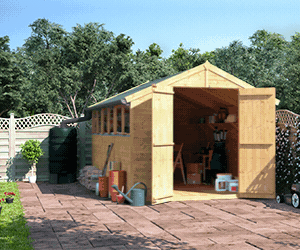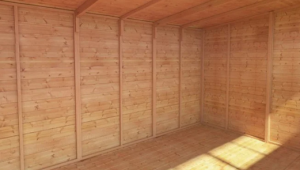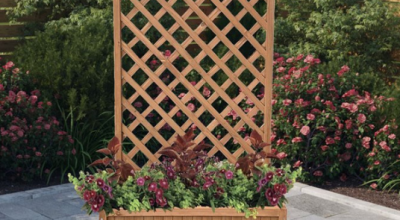Jump to:
Gardening enthusiasts understand the critical importance of protecting plants from frost. This chilling effect can damage or kill plants, impacting their growth and health. It’s particularly relevant as seasons change and temperature drops.
In this guide, we’ll cover the effective strategies for frost protection. By implementing these methods, gardeners can safeguard their greens during colder months. Stay tuned for expert tips on maintaining a thriving garden, no matter the weather!
Why Frost is Dangerous to Plants

Frost is dangerous due to the way it impacts the plant’s cellular structure. When temperatures drop below freezing, the water inside plant cells can freeze. This, in turn, leads to ice crystal information. These ice crystals can puncture and damage the delicate cell walls. This harm affects the plant’s normal functioning, disrupting the flow of nutrients and water.
The aftermath damage often manifests as wilted and discoloured or dead foliage. This is especially the case in tender, new growth). If conditions worsen, frost can cause the plant’s cells to burst, leading to damage and even death. Frost-damaged plants also become more susceptible to diseases and pests. For one, their natural defence mechanisms are compromised.
The extent of the damage depends on factors like:
- the plant’s hardiness,
- the duration and severity of the frost,
- and the plant’s stage of growth.
Frost is especially harmful during early spring when new growth is most vulnerable. Gardeners must grasp these risks to protect their plants and maintain a thriving garden year-round.
Identifying Frost-Sensitive Plants

Identifying frost-sensitive plants is key in ensuring their protection during cold snaps. Here’s a list of common plants that are particularly vulnerable to frost damage:
- Tomatoes: These popular garden vegetables are highly sensitive to frost. Even a light freeze can damage their leaves and fruit, stunting growth or killing the plant.
- Basil: This fragrant herb wilts and discolours rapidly when exposed to frost. In return, it loses its vibrant flavour and aroma.
- Impatiens: Known for their bright flowers, impatiens are intolerant to cold. They also quickly succumb to frost damage.
- Squash and Zucchini: Both these vegetables have tender leaves. Frost can impact their yield and health.
- Begonias: These ornamental flowers are susceptible to frost. Cold temperatures easily damage their delicate petals and leaves.
- Peppers: Both sweet and hot varieties of peppers are frost-sensitive. The low temperatures affect their fruit set and overall health.
- Melons: Like squash, melons have tender foliage and fruits. The cold snap affects their growth and sweetness.
Each of these plants requires careful monitoring and protection as temperatures drop. Covering or moving them to a warmer location can help ensure their survival.
Forecasting Frost

(Image Credit: Wikimedia Commons)
The UK weather can be unpredictable, making forecasting frost more important than ever. Here are some tips to anticipate frost and interpret weather forecasts effectively:
Monitor temperature forecasts
Regularly check local weather reports for temperature predictions, particularly during spring and autumn. Nighttime temperatures near or below 0°C often indicate a risk of frost.
Understand microclimates
Be aware of your garden’s microclimate. Low-lying areas, for instance, are more prone to frost as cold air settles.
Look for clear, calm nights
Frost often forms under clear skies and calm winds. These conditions facilitate heat loss from the ground.
Use weather apps and websites
Use reliable tools like the Met Office website or the BBC Weather app for accurate forecasts in the UK. They provide detailed temperature data and frost warnings.
Stay informed and understand these signs to take timely action!
Prevention Strategies

Don’t let frost catch you off guard. Explore the effective prevention strategies in this section. Delve into our insights and fortify your green gaven with these foolproof techniques:
1. Covening plants
- Techniques: Drape a frost cloth or burlap over plants, ensuring it extends to the ground to trap heat. Avoid using plastic, as it can damage plants if it touches the foliage.
- Materials: Use commercial frost cloths, old bed sheets, or blankets. These materials provide insulation while allowing air and moisture to circulate.
2. Watering before frost
- How it helps: Watering your garden before a frost can help protect plants. Wet soil retains heat better than dry soil, creating a warmer microclimate. The water also releases latent heat, protecting plants from freezing.
- Timing: Water in the afternoon before a frost night. Make sure the soil is moist but not waterlogged.
3. Using cloches and frost blankets
- Effective usage: Place cloches over each plant or use blankets over larger areas. Ensure they’re secured to prevent wind from removing them.
- Advantages: These methods provide a physical barrier against frost, retaining heat and moisture.
4. Mulching
- Benefits: Mulch acts as an insulator, keeping the soil and roots warm. It also prevents soil moisture from evaporating quickly.
- Best types: Straw, leaves, or bark chips are effective. Apply a thick layer around the base of plants, but avoid direct contact with the stems to prevent rot.
5. Bringing potted plants indoors
- Indoor relocation: Move potted plants indoors when first forecasted. Alternatively, into a BillyOh greenhouse when frost is forecasted. The enclosed space shields them from the harsh cold, preventing frost damage. A wooden greenhouse, for one, acts as a buffer; it retains heat and maintains a stable environment.
- Considerations: Place them in a cool, well-lit area. Avoid placing them near heat sources or in dark, overly warm rooms, as this can stress the plants.
Long-Term Frost Protection
For prolonged frost defence, consider the broader aspects of garden planning. The following tips below are fundamental in minimising frost damage:
Landscape design tips
Good landscape design can significantly reduce frost risk. Strategic plant placement is key. Sheltered spots, like near walls or fences, provide warmth and protection. Creating windbreaks using hedges or taller plants can provide a shield from cold winds. Utilising natural microclimates within your garden can also be beneficial. For instance, planting in elevated areas prevents cold air from settling around plants. Meanwhile, south-facing slopes receive more sunlight, offering warmth.
Hardy plant choices
Choosing frost-resistant plants is a proactive approach to frost protection. Hardy perennials like Hellebores and Siberian Iris withstand the cold well. Shrubs such as Boxwood and certain varieties of Hydrangeas are also resilient.
For vegetables, consider frost-tolerant options like Kale, Brussels Sprouts, and Carrots. In herb gardens, Thyme and Sage are good choices, as they can endure colder temperatures. Incorporating these hardier species can ensure that your garden remains vibrant and productive.
What to Do After Frost
Take these steps to aid their recovery and prevent further damage:
- Wait to prune: Resist the urge to prune damaged foliage immediately. Wait until the threat of frost has passed, and new growth appears to assess the true extent of the damage.
- Water gently: Water the plants lightly to help thaw the soil gradually. Avoid overwatering, as damaged roots may be more susceptible to rot.
- Add mulch: Apply a layer of mulch around the base of the plant to insulate the roots and retain soil warmth.
- Avoid fertilising: Wait until the plant shows signs of new growth before fertilising. Otherwise, it can stress the already weakened plant.
- Provide shade: See if a sudden frost is followed by bright sunlight. If yes, provide temporary shade to prevent scorching of damaged leaves.
- Monitor for pests and diseases: Frost-damaged plants are more vulnerable to these. Regularly check for any signs of infestation or infection and treat promptly.
With these, you can help your affected plants recover and regain their health and vigour.
Round-up
Protecting plants from frost is an essential aspect of gardening. The key is to:
- understand the risks
- identify sensitive plants
- forecasting frost
- employing effective prevention strategies
Choosing hardy plants and thoughtful landscape design can enhance a garden’s resilience. Should frost damage occur, timely recovery steps are crucial. With these steps, you can ensure the health of your garden throughout the colder months.
Explore our selection of BillyOh greenhouses: wooden greenhouses and metal greenhouses. Up next on your reading list: Can Rattan Furniture Survive Winter?













What do you think ?